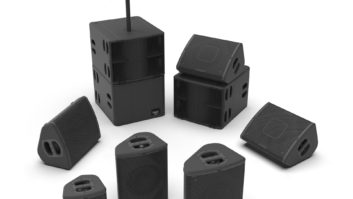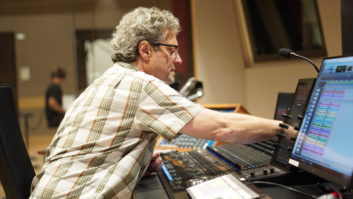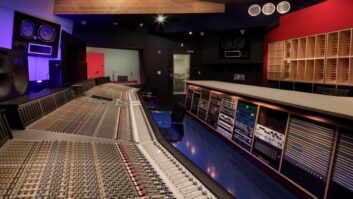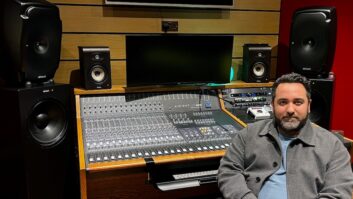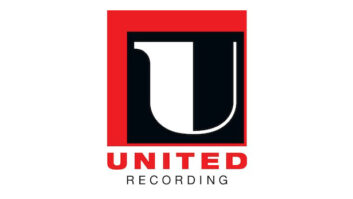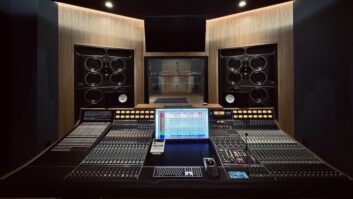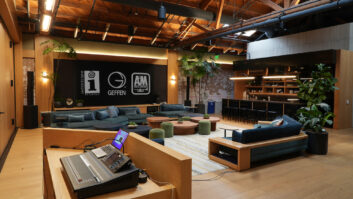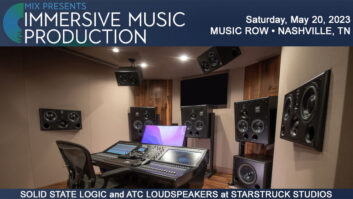
Recording studios began to reopen during the latter half of June as state and local governments, eager to get the economy back up and running, began to relax restrictions imposed in the face of the coronavirus pandemic. Nearly a month later, some states dramatically rolled back reopening plans for certain sectors of their economies, but as PSN went to press, music production facilities were still able to work, as long as they followed the relevant guidelines.
“I was a little dismayed by how little information I was able to get,” says Tim O’Sullivan, studio manager and engineer at Barefoot Recording in Hollywood. He and the staff started planning a safe reopening as soon as they were able, but with no guidance from the music production community released at the time, “We had to figure out guidelines on our own,” he says.
O’Sullivan was about to send an email blast to clients about Barefoot’s new protocols when the Recording Academy’s P&E Wing and the Hollywood film and TV community finally issued their respective guidelines to help studios reopen at the end of May. “We were pleased to see we were on the same page,” he says.
The shutdown offered an opportunity to also take care of some much-needed housekeeping at Barefoot, says O’Sullivan. “We did take the time to do a lot of things that we wanted to do for years that we never could. Now that we’re back at it, everybody is so happy; the studio has been a source of strength through all of this.”
Tony Drootin, studio manager at Sound On Sound in Montclair, NJ, did his research and put various disinfecting protocols in place. “We walked through the facility and made a list of everything you could possibly touch and came up with procedures for the staff to clean on a regular basis,” he says. Staff are using diluted bleach for doorknobs and furniture surfaces. Microphones, headphones, cue boxes, windscreens and computer keyboards are cleaned before and after every session with 99% isopropyl alcohol, he says.
With 3,000 sq. ft. of tracking space available, including six iso booths, the multi-studio facility can accommodate plenty of musicians with proper social distancing, says Drootin. “The fact that we built such large live rooms is unbelievably advantageous in trying to deal with this. Everyone must wear a mask who is not performing vocally or has a mouthpiece in their face.”
In the control rooms, he says, furniture has been removed to accommodate fewer people. “We set a limit of four people maximum, which means the assistant engineer is not allowed in the room.”
He’s screening prospective bookings, turning away projects with too many people in the entourage. “The artist, producer, maybe the manager, and that’s it,” he says. “We’re not taking any chances. It’s going to be a rough ride, and we’re going to be really, really careful.”
Brett Orrison, owner of Austin Recording Service in Texas, had just finished basic tracks for a new Black Angels album when he had to close for two months. As restrictions have eased, he’s allowing only one other person, masked, into his facility at a time—either the band’s lead singer, Alex Maas, to overdub his vocals, or Myles Crosby, audio technician and production manager at Antone’s Blues Nightclub. “Myles is my best friend of 30 years and has been the only person in my quarantine world” other than his own family, he says. Together they are mixing and mastering archived performances from the famed Austin club for livestreaming.
COVID-19 Guidelines for Safe Audio Production Released in UK
At least Orrison didn’t have to go out and find cleaning products. “I’ve been using my isopropyl alcohol for my tape machine to clean my microphone grilles, doorknobs and things like that,” he says. But sessions are likely to remain limited. “As soon as everybody is fine with going back to restaurants and concerts in the proper way, I’ll be back to normal. For now, I’m going to keep it super limited and try my best to make enough money to pay my bills and get through this,” he says.
A lot of the protocols are common sense. “It’s simple things like installing hands-free soap dispensers and foot-operated trash cans,” says O’Sullivan. “I portioned out individual bags of coffee, because we can’t have general coffee pots.”
Barefoot, which shares an entrance with UnderToneAudio’s manufacturing facility upstairs, has leveraged technology to streamline access management. “There’s a QR code on the front door. It pulls up a Google form on your phone. You sign in before you come into the building and it shows you a copy of the guidelines and you check that you’re read them,” says O’Sullivan.
“Because we have a common entrance, we stagger everybody’s arrival times. And now we have a little front desk set up, with a hands-free thermometer.” Staff are getting regular tests, he says, logging their results in another Google doc.
Recording Academy Advises How To Reopen Studios
Barefoot’s live rooms are large enough to house a good number of performers, but numbers are limited in the control room. Managers are encouraged to check in over video conferencing and the Audio Movers app, which streams audio live out of the DAW. “I think, for people like that, it will continue to be the norm—and it’s a lot less disruptive to the flow of the session,” says O’Sullivan.
Orrison had been mixing FOH on Jack White’s 2018 tour, which ended in December, and decided to take a year off to get his studio, newly equipped with a Rupert Neve Designs 5088, up and running. Seeing clubs and bars permanently close in Austin due to the virus, he’s worried for his colleagues. “It’s sad that in our industry, and so many others, you take the work away for two months and people lose everything. That’s a sad place to be in America. If this goes on for six or eight months, it’s going to be devastating for the art and music communities.”
Sound On Sound, which relocated from Manhattan a few years ago, has long embraced Broadway show cast album recording. An audit by one such upcoming project raised an interesting question, says Drootin: “What type of air conditioning system do we have? We hadn’t addressed the issue, and we’re now installing ultra-violet systems in our air conditioning ducts.” It’s not only the right thing to do, he says. “It’s a wonderful sales pitch to say that we’ve done it.”
Drootin reports that producers, unable to find suitable Manhattan studios open, have been happy to find a facility just across the river back at work. “We made the right decision to be where we are, and now we’re seeing the benefit,” he says. “We’re busier than ever.”
